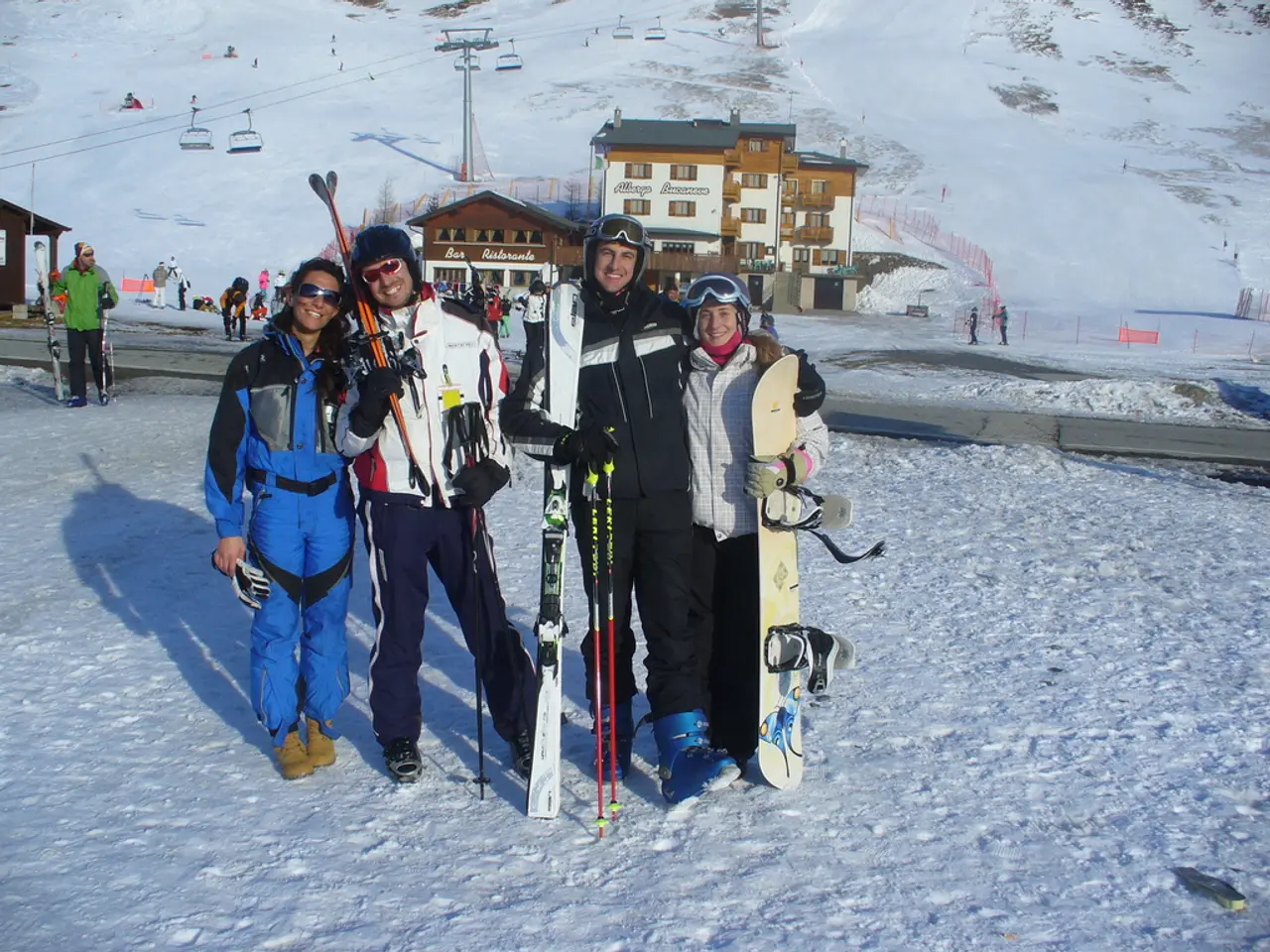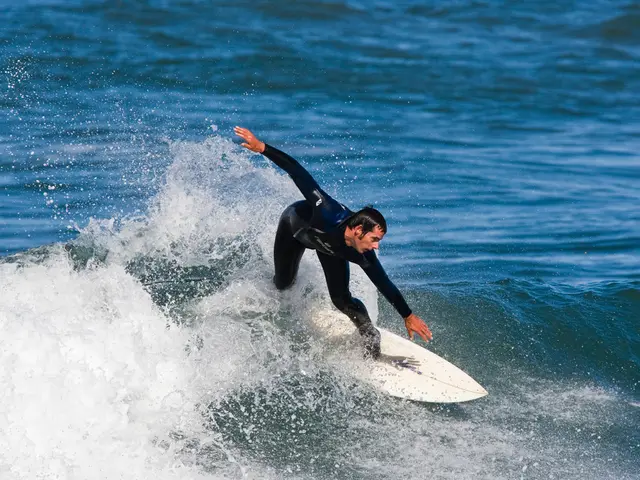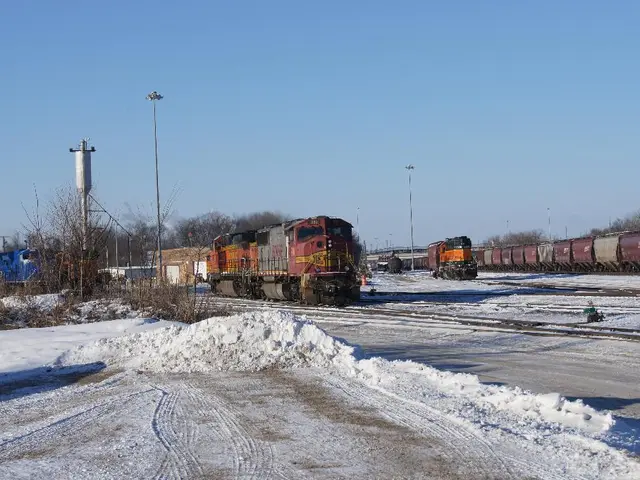Sizzling Heat Waves in Death Valley Raise Concerns over Tourism Sustainability
Death Valley National Park, known for its extreme heat and unique landscapes, has been experiencing a series of record-breaking temperatures due to the intensified effects of climate change.
In the summer of 2024, the park's average temperature reached an unprecedented 104.5°F (40.3°C), surpassing the previous records set in 2021 and 2018 [1][2]. Overnight lows averaged 91.9°F (33.3°C), and some nights did not dip below 100°F. Daytime highs frequently exceeded 120°F (48.9°C), with the highest temperature reaching 129.2°F (54°C) on July 7 [1][3]. These unbearable temperatures have made Death Valley one of the hottest places on Earth [3][4][5].
Despite the extreme heat, the park continues to attract around a million visitors annually. Many tourists focus on no or low-walking attractions and use facilities like Furnace Creek Visitor Center for information and respite [2].
To ensure a safe and enjoyable visit during the hottest months, tourists should take significant precautions. It is advisable to visit during cooler parts of the day (early morning or late afternoon) to avoid maximum heat exposure [2]. Carrying ample water and staying hydrated is crucial to prevent heat exhaustion or heat stroke [2]. Limiting strenuous activity and preferring attractions that require minimal walking is also recommended, as advised by park staff and visitor center resources [2].
Sun protection is equally important. Tourists should use hats, sunscreen, and lightweight clothing to protect themselves from the harsh sun [1]. Mobile coverage is very limited or nonexistent, so it's essential to carry traditional maps and inform someone of your itinerary [1]. Recognizing early signs of heat-related illness and seeking shelter immediately if feeling dizzy or nauseous is vital [2].
The geography of Death Valley traps heat intensely, and climate change is making these extreme temperatures more frequent and severe [3][4]. Visitors should respect the park's natural hazards while enjoying its unique landscapes safely.
Some tour operators have adjusted their itineraries to schedule tours during the coolest parts of the day. Visiting Death Valley during cooler months is more comfortable and reduces strain on park resources [6]. Many tourists are now choosing to visit Death Valley in the cooler months of fall, winter, or early spring [6].
However, not all tourists are reconsidering their plans to visit Death Valley due to increasing risks and extreme temperatures. Some are even rethinking their travel plans to cruises, as there are truths about cruises that might make travelers reconsider booking them [7].
Responsible travel in Death Valley includes respecting park guidelines, being mindful of weather patterns, and minimizing environmental impact [8]. Tourists should be aware that not all destinations are welcoming to American visitors [9].
Climate scientists warn that temperatures in Death Valley could continue to rise in the coming years due to climate change [4]. Despite these challenges, Death Valley National Park remains a unique and unforgettable destination for those willing to take the necessary precautions and embrace the extreme heat.
Sources:
[1] National Park Service. (n.d.). Death Valley National Park. Retrieved from https://www.nps.gov/deva/index.htm
[2] National Park Service. (n.d.). Tips for Visiting During the Summer. Retrieved from https://www.nps.gov/deva/learn/management/summer-tips.htm
[3] National Park Service. (2021, August 16). Death Valley Sets New Record for Highest Temperature Ever Recorded on Earth. Retrieved from https://www.nps.gov/deva/learn/news/death-valley-sets-new-record-for-highest-temperature-ever-recorded-on-earth.htm
[4] National Park Service. (2021, August 16). Climate Change and Death Valley National Park. Retrieved from https://www.nps.gov/deva/learn/nature/climate-change.htm
[5] National Park Service. (2020, August 16). Death Valley Sets New Record for Highest Temperature Ever Recorded on Earth. Retrieved from https://www.nps.gov/deva/learn/news/death-valley-sets-new-record-for-highest-temperature-ever-recorded-on-earth.htm
[6] National Park Service. (n.d.). Visiting Death Valley During the Cooler Months. Retrieved from https://www.nps.gov/deva/planyourvisit/cooler-months.htm
[7] Garro, J. (2023, March 15). The Truth About Cruises That Might Make Travelers Reconsider Booking Them. Retrieved from https://www.travelandleisure.com/travel-tips/cruises-travel-advice/truth-about-cruises
[8] National Park Service. (n.d.). Responsible Travel in Death Valley National Park. Retrieved from https://www.nps.gov/deva/learn/nature/responsible-travel.htm
[9] Travel and Leisure. (2023, March 15). Rising Crime Rates in Some US Cities Can Catch Travelers Off Guard. Retrieved from https://www.travelandleisure.com/news/rising-crime-rates-in-some-us-cities-can-catch-travelers-off-guard
- To help ensure a successful trip to Death Valley National Park, one may find tips in environmental-science and lifestyle resources, focusing on understanding climate-change impacts and adapting to the extreme weather conditions.
- As climate change continues to exacerbate weather patterns in Death Valley, tourists can be proactive by considering travel during the cooler months, supporting responsible and sustainable tourism, and appreciating the unique landscape while minimizing environmental impact.
- In addition to studying the park's geology and landscapes, tourists should also consider the role of science in explaining how climate change is causing extreme temperatures in Death Valley, which can help inform decisions about travel and lifestyle choices associated with the destination.




